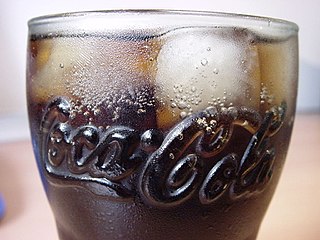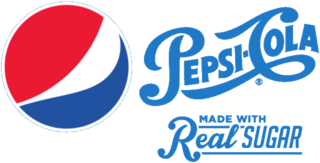
Bipolar disorder, previously known as manic depression, is a mental disorder characterized by periods of depression and periods of abnormally elevated mood that each last from days to weeks. If the elevated mood is severe or associated with psychosis, it is called mania; if it is less severe, it is called hypomania. During mania, an individual behaves or feels abnormally energetic, happy or irritable, and they often make impulsive decisions with little regard for the consequences. There is usually also a reduced need for sleep during manic phases. During periods of depression, the individual may experience crying and have a negative outlook on life and poor eye contact with others. The risk of suicide is high; over a period of 20 years, 6% of those with bipolar disorder died by suicide, while 30–40% engaged in self-harm. Other mental health issues, such as anxiety disorders and substance use disorders, are commonly associated with bipolar disorder.
Bipolar I disorder is a type of bipolar spectrum disorder characterized by the occurrence of at least one manic episode, with or without mixed or psychotic features. Most people also, at other times, have one or more depressive episodes.

Lithium carbonate is an inorganic compound, the lithium salt of carbonic acid with the formula Li
2CO
3. This white salt is widely used in processing metal oxides. It is on the World Health Organization's List of Essential Medicines for its efficacy in the treatment of mood disorders such as bipolar disorder.
Mania, also known as manic syndrome, is a mental and behavioral disorder defined as a state of abnormally elevated arousal, affect, and energy level, or "a state of heightened overall activation with enhanced affective expression together with lability of affect." During a manic episode, an individual will experience rapidly changing emotions and moods, highly influenced by surrounding stimuli. Although mania is often conceived as a "mirror image" to depression, the heightened mood can be either euphoric or dysphoric. As the mania intensifies, irritability can be more pronounced and result in anxiety or anger.

A mood stabilizer is a psychiatric medication used to treat mood disorders characterized by intense and sustained mood shifts, such as bipolar disorder and the bipolar type of schizoaffective disorder.
7 Up or Seven Up is an American brand of lemon-lime–flavored non-caffeinated soft drink. The brand and formula are owned by Keurig Dr Pepper, although the beverage is internationally distributed by PepsiCo.
A psychiatric or psychotropic medication is a psychoactive drug taken to exert an effect on the chemical makeup of the brain and nervous system. Thus, these medications are used to treat mental illnesses. These medications are typically made of synthetic chemical compounds and are usually prescribed in psychiatric settings, potentially involuntarily during commitment. Since the mid-20th century, such medications have been leading treatments for a broad range of mental disorders and have decreased the need for long-term hospitalization, thereby lowering the cost of mental health care. The recidivism or rehospitalization of the mentally ill is at a high rate in many countries, and the reasons for the relapses are under research.

The Coca-Cola Company's formula for Coca-Cola syrup, which bottlers combine with carbonated water to create the company's flagship cola soft drink, is a closely guarded trade secret. Company founder Asa Candler initiated the veil of secrecy that surrounds the formula in 1891 as a publicity, marketing, and intellectual property protection strategy. While several recipes, each purporting to be the authentic formula, have been published, the company maintains that the actual formula remains a secret, known only to a very few select employees.

Powerade is a sports drink created and sold by the Coca-Cola Company. Its primary competitor is Gatorade, owned by PepsiCo.
The emphasis of the treatment of bipolar disorder is on effective management of the long-term course of the illness, which can involve treatment of emergent symptoms. Treatment methods include pharmacological and psychological techniques.
Cyclical variations in moods and energy levels have been recorded at least as far back as several thousand years. The words "melancholia" and "mania" have their etymologies in Ancient Greek. The word melancholia is derived from melas/μελας, meaning "black", and chole/χολη, meaning "bile" or "gall", indicative of the term's origins in pre-Hippocratic humoral theories. A man known as Aretaeus of Cappadocia has the first records of analyzing the symptoms of depression and mania in the 1st century of Greece. There is documentation that explains how bath salts were used to calm those with manic symptoms and also help those who are dealing with depression. Even today, lithium is used as a treatment to bipolar disorder which is significant because lithium could have been an ingredient in the Greek bath salt. Centuries passed and very little was studied or discovered. It wasn't until the mid-19th century that a French psychiatrist by the name of Jean-Pierre Falret wrote an article describing "circular insanity" and this is believed to be the first recorded diagnosis of bipolar disorder. Years later, in the early 1900s, Emil Kraepelin, a German psychiatrist, analyzed the influence of biology on mental disorders, including bipolar disorder. His studies are still used as the basis of classification of mental disorders today.

Bipolar disorder in children, or pediatric bipolar disorder (PBD), is a rare mental disorder in children and adolescents. The diagnosis of bipolar disorder in children has been heavily debated for many reasons including the potential harmful effects of adult bipolar medication use for children. PBD is similar to bipolar disorder (BD) in adults, and has been proposed as an explanation for periods of extreme shifts in mood called mood episodes. These shifts alternate between periods of depressed or irritable moods and periods of abnormally elevated moods called manic or hypomanic episodes. Mixed mood episodes can occur when a child or adolescent with PBD experiences depressive and manic symptoms simultaneously. Mood episodes of children and adolescents with PBD are different from general shifts in mood experienced by children and adolescents because mood episodes last for long periods of time and cause severe disruptions to an individual's life. There are three known forms of PBD: Bipolar I, Bipolar II, and Bipolar Not Otherwise Specified (NOS). The average age of onset of PBD remains unclear, but reported age of onset ranges from 5 years of age to 19 years of age. PBD is typically more severe and has a poorer prognosis than bipolar disorder with onset in late-adolescence or adulthood.

Lithia water is defined as a type of mineral water characterized by the presence of lithium salts. Natural lithia mineral spring waters are rare, and there are few commercially bottled lithia water products.
Bipolar II disorder (BP-II) is a mood disorder on the bipolar spectrum, characterized by at least one episode of hypomania and at least one episode of major depression. Diagnosis for BP-II requires that the individual must never have experienced a full manic episode. Otherwise, one manic episode meets the criteria for bipolar I disorder (BP-I).

Pepsi-Cola Made with Real Sugar, originally called Pepsi Throwback and still branded that way in some markets, is a soft drink sold by PepsiCo. The drink is flavored with cane sugar and beet sugar instead of high-fructose corn syrup, with which soft drink companies replaced sugar in their North American products in the 1980s. In June 2014, the Pepsi Throwback name was replaced by the current name, which continues to be made without high-fructose corn syrup. As of April 2020, it received a new logo. The "throwback" name was also used for a variant of PepsiCo's citrus-flavored Mountain Dew. In early 2024, it was announced that Pepsi-Cola Made with Real Sugar would be rebranded as Pepsi-Cola Soda Shop Made with Real Sugar with new packaging to fit in with the company's Soda Shop series of cane sugar sweetened colas.

Certain lithium compounds, also known as lithium salts, are used as psychiatric medication, primarily for bipolar disorder and for major depressive disorder. In lower doses, other salts such as lithium citrate are known as nutritional lithium and have occasionally been used to treat ADHD. Lithium is taken orally.
The following outline is provided as an overview of and topical guide to bipolar disorder:









